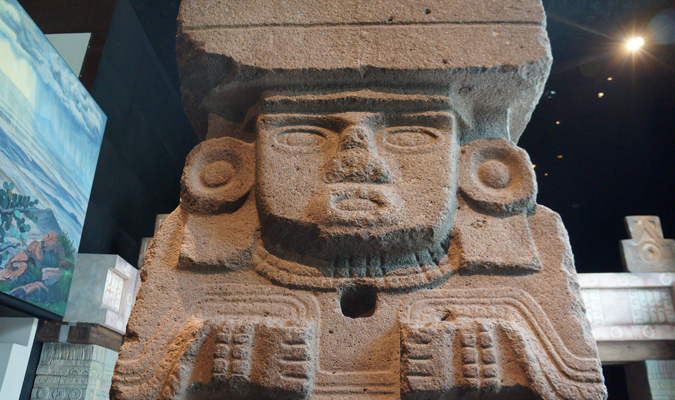Mexico City’s Museo Nacional de Antropología (National Museum of Antropology) is one of the city’s most important and most visited museums which naturally made it a stop on our #MexicoJourney itinerary today. The museum contains one of the world’s largest collections of archaeological and anthropological artifacts — over 10,000 pieces — from pre-Hispanic times including Teotihuacan, Toltec, Aztec, Mixtec, Zapotec, and Maya.
Spanning a large portion within Chalpultepec Park, each room displays different Mesoamerican cultures comprehensively and lends insight to a deep, complex history. The Piedra del Sol (Stone of the Sun)- often incorrectly identified and referred to as the “Aztec Calendar” – is one of the museum’s greatest highlights. However there was one piece in the museum that really stood out to me above the rest: a monolithic sculpture of Chalchiuhtlicue, the Aztec Goddess of Water. It might have been the impossible-to-pronounce name, but something drew me to her presence.
Her name, pronounced chall-wee-tl’E-kO means “She of the Jade Skirt”. She was a mighty goddess of all waters on earth, but especially horizontal, running waters (lakes, lagoons, steams, etc) and the consort to the Tláloc (god of rain, fertility, and water).She was adored with a headdress, collars, bracelets and wore a quechquemit (shawl-like garment), skirt and sandals. In addition to waters, she was associated with agriculture and fertility.
It is quite interesting to know as well that in the Archaeological Site of Teotihuacan, The Pyramid of the Sun is associated with Tláloc and the Pyramid of the Moon (second largest pyramid in Teotihuacan) is with Chalchiuhtlicue. Tomorrow we are visiting Teotihuacan and I look forward to learning more about her!






